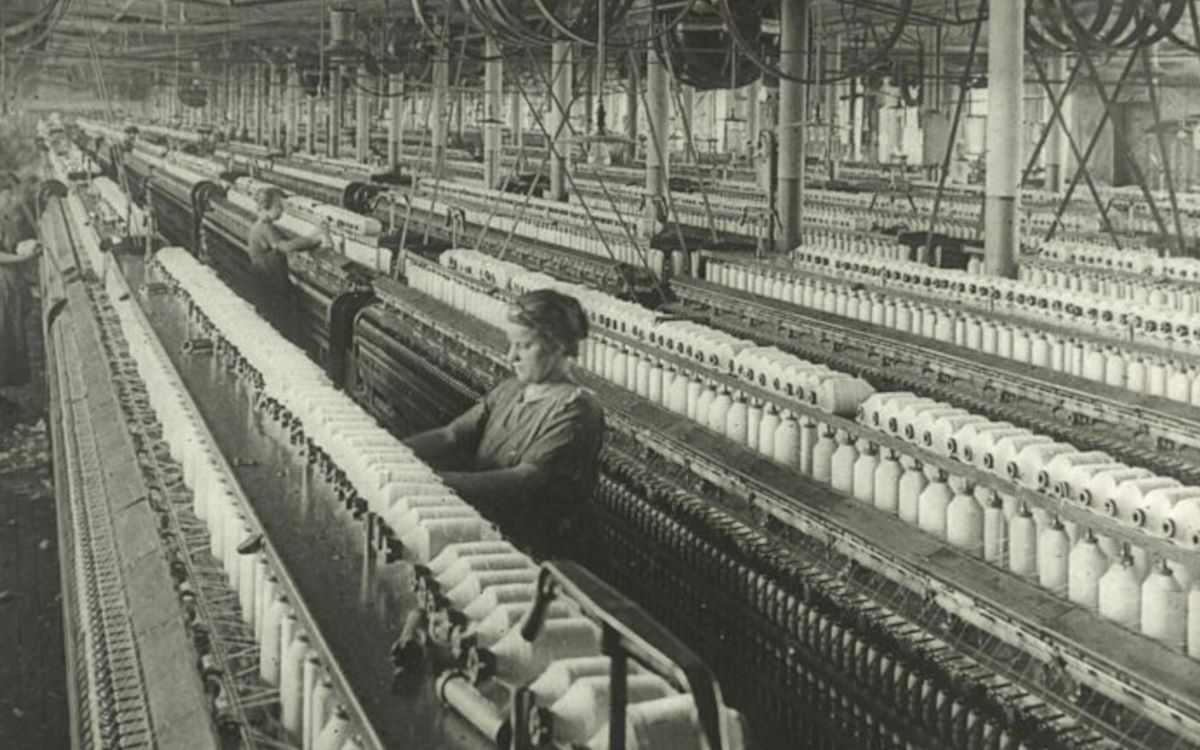Shadows Of The Smokestacks: Lost Textile Mills Of New England

Have you ever wondered about the lost textile mills of New England? These once-thriving hubs of industry now stand as silent witnesses to a bygone era. In the 19th and early 20th centuries, New England's textile mills were the heart of American manufacturing. Towns like Lowell, Massachusetts, and Manchester, New Hampshire, buzzed with activity, producing fabrics that clothed a nation. Today, many of these mills lie abandoned, their brick walls and towering smokestacks slowly crumbling. Yet, they hold stories of innovation, hard work, and community. Join us as we explore the history, impact, and current state of these fascinating relics.
The Rise and Fall of New England's Textile Mills
New England's textile mills once stood as towering symbols of industrial might. These mills, powered by rivers and streams, produced fabrics that clothed a nation. Over time, however, many fell into disuse, leaving behind hauntingly beautiful ruins.
Ghostly Remnants of Industrial Glory
Exploring the remnants of these mills offers a glimpse into the past. Each site tells a unique story of innovation, labor, and eventual decline.
Slater Mill, Pawtucket, Rhode Island
- Often considered the birthplace of the American Industrial Revolution, Slater Mill still stands as a museum. It offers guided tours that delve into its rich history and significance.
Lowell Mills, Lowell, Massachusetts
- Once a bustling hub, Lowell Mills now serves as a National Historical Park. Visitors can walk through well-preserved buildings and learn about the lives of mill workers.
Boott Cotton Mills, Lowell, Massachusetts
- Part of the Lowell National Historical Park, Boott Cotton Mills features a working weave room. The sound of looms clattering brings history to life.
Hidden Gems of Abandoned Mills
Some mills, less known but equally fascinating, lie off the beaten path. These hidden gems offer a quieter, more introspective experience.
Harris Mill, Coventry, Rhode Island
- Nestled in a small town, Harris Mill has been partially repurposed into apartments. The remaining structures, however, still whisper tales of their industrial past.
Royal Mill, West Warwick, Rhode Island
- This mill complex has been transformed into modern living spaces. Yet, the original architecture remains, providing a striking contrast between old and new.
Ponemah Mill, Norwich, Connecticut
- Once the largest textile mill in the world, Ponemah Mill's vast, empty spaces evoke a sense of awe. Plans for redevelopment are in place, but for now, it stands as a monument to a bygone era.
Mills Turned Museums and Cultural Centers
Some mills have found new life as museums and cultural centers, preserving their history while serving the community.
American Textile History Museum, Lowell, Massachusetts
- Though it closed in 2016, the museum's collection has been preserved. Artifacts and exhibits can now be found at other institutions, keeping the mill's legacy alive.
Woonsocket Mill, Woonsocket, Rhode Island
- Now home to the Museum of Work and Culture, this mill offers interactive exhibits that highlight the lives of immigrant workers and their contributions to the industry.
Old Schwamb Mill, Arlington, Massachusetts
- This working museum still produces handcrafted picture frames. Visitors can tour the facility and witness traditional woodworking techniques in action.
Forgotten Mills Reclaimed by Nature
Nature has a way of reclaiming abandoned spaces. These mills, now overgrown and crumbling, offer a hauntingly beautiful sight.
Monadnock Mills, Claremont, New Hampshire
- The ruins of Monadnock Mills are slowly being overtaken by vegetation. The crumbling brick walls and rusting machinery create a picturesque, eerie landscape.
Pepperell Mill, Biddeford, Maine
- While parts of Pepperell Mill have been redeveloped, other sections remain abandoned. The juxtaposition of decay and renewal makes for a fascinating exploration.
Saco-Lowell Shops, Saco, Maine
- These once-thriving mills now lie in ruins, with trees and vines weaving through the old structures. The site offers a poignant reminder of the passage of time.
The Legacy of New England's Textile Mills
The legacy of New England's textile mills lives on in these hauntingly beautiful ruins. Each site offers a unique window into the past, inviting visitors to reflect on the rise and fall of industrial America.
Echoes of the Past
New England's textile mills once buzzed with life, shaping communities and economies. These mills now stand as silent witnesses to a bygone era. Their brick walls and rusted machinery tell stories of innovation, hard work, and change. Visiting these sites offers a glimpse into the region's rich history and the industrial revolution that transformed America.
Exploring these abandoned mills can be a haunting yet fascinating experience. They remind us of the relentless march of progress and the communities that rose and fell with the industry. Whether you're a history buff or just curious, these mills offer a unique window into the past.
Next time you're in New England, take a moment to visit one of these historic sites. You'll walk away with a deeper appreciation for the region's industrial heritage and the people who powered it.

